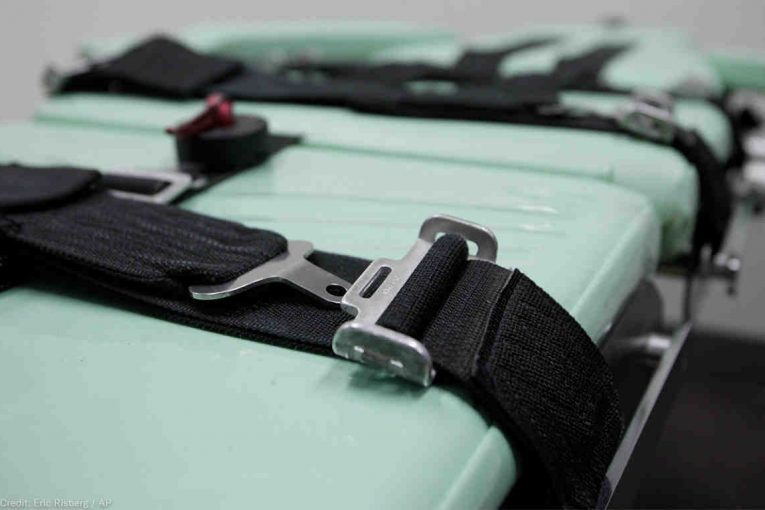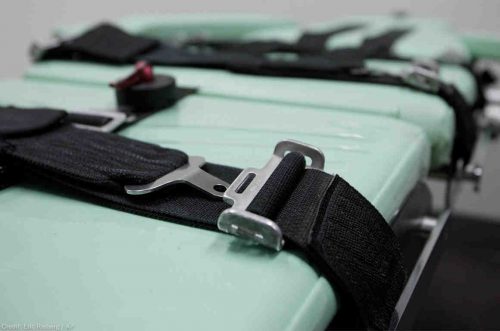

By Aria Jalan and Nevya Patel
PALESTINE, TX — New evidence suggesting that Nikki, Robert Roberson’s daughter, died of natural and accidental causes urged his attorneys this past week to file a brief opposing the Anderson County District Attorney’s request for an execution date.
If executed, the lawyers said, it would make Roberson the first person in the U.S. to be executed based on the discredited shaken baby hypothesis, according to an Innocence Project press release.
The brief explained, “Nikki died of natural and accidental causes: a severe undiagnosed pneumonia that caused her to cease breathing, collapse, and turn blue before she was discovered unconscious. It is irrefutable that Nikki’s medical records show that she was severely ill during the last week of her life.”
The defense pleading also stated Nikki’s prescriptions of dangerous medications that are no longer given to children her age “further suppressed respiration in lungs that were already infected.”
The filing noted Nikki ceased breathing two days after taking her Phenergan and codeine medications, sustaining brain death which prevented her from being revived, adding it “was a tragic, untimely death of a sick child whose impaired, impoverished father did not know how to explain what has confounded the medical community for decades.”
After spending over 20 years on Texas’s death row for the debunked shaken baby hypothesis, said the defense, Roberson’s case has received widespread support from various scientists, medical doctors, former federal judges as well as Brian Wharton, the former lead detective from the case who originally testified for the prosecution in 2003.
“For over 20 years, I have thought that something went very wrong in Mr. Roberson’s case and feared that justice was not served,” said Wharton, who was Assistant Chief of the Palestine Police Department and is now an Ordained Elder in the United Methodist Church.
Wharton added, “I have come to believe that Nikki died of accidental and natural causes and that there was no crime. I am convinced that Mr. Roberson is innocent.”
One of Roberson’s attorneys, Gretchen Sims Sween, urges the courts (or governor) to take action, arguing, they “must stop this miscarriage of justice before it is too late…What happened to Robert Roberson should not happen to any parent who is simply incapable of explaining a child’s condition—especially when many trained medical professionals barely understand the phenomenon.”
Roberson’s legal battle has entered a critical phase with motions pending in the 3rd Judicial District Court and the Texas Court of Criminal Appeals, driven by new scientific evidence challenging his conviction for his daughter’s death, said the Innocence Project.
According to court documents, Roberson’s recent filings emphasize his innocence based on evolving forensic understanding not available during his original trial. His motion in the 3rd Judicial District Court seeks “Notice and Opportunity to Be Heard Before Any Execution Date is Set,” highlighting the importance of a fair hearing in light of new evidence.
Roberson’s legal team, in a statement, said, “Today’s opposition motion in the district court and the Suggestion to Reconsider at the CCA argue that another case, Ex parte Roark, is pending before the CCA where the State conceded the falsity of virtually identical expert testimony on the shaken baby hypothesis.”
The team explained this legal maneuver draws attention to issues in how different jurisdictions handle evolving scientific understanding, as shown by contrasting responses in Dallas and Anderson counties.
In Dallas County, the prosecutor conceded that scientific understanding had shifted, leading to a new trial for a similar case, while Anderson County remains steadfast in its position, citing no significant change in the consensus.
The defense continues to insist Roberson’s case is further complicated by his autism, initially unrecognized by hospital staff at the time of his daughter’s medical crisis, according to the release.
According to sources close to the Roberson family, “The hospital staff did not know Mr. Roberson had autism and misinterpreted his demeanor as a lack of concern for his gravely ill daughter.”
Roberson’s defense argues this misinterpretation played a pivotal role in shaping initial perceptions and potentially influencing legal proceedings, adding outdated medical theories, particularly regarding shaken baby syndrome, led to his wrongful conviction despite significant advances in forensic science since his trial in 2003.
As Roberson’s legal team said it continues to navigate the complexities of challenging his conviction, the Innocence Project said his case raises broader questions about the intersection of law and evolving scientific knowledge in the justice system.